Shelagh Jessop is an American-born textile artist living in Western France. Shelagh studied textile design at the University of Kansas where she began her love of hand-dying fabrics. Inspired by the quilters of Gees Bend, Shelagh began using her own hand-dyed works in the creation of quilts that she considered to be like painting with fabrics. Recently, Shelagh began her company Stuart Moores Textiles, which she named after her great-grandfather, a hard-working inventor and engineer who inspired her with his work ethic and ingenuity. In addition to selling quilts, home goods, and templates, Shelagh is a brand new mom to her son, Julian. Only a month old, you can find his cuteness peppering Shelagh’s instagram feed amongst the gorgeous hand-dyed textiles and yarns from her projects. Shelagh’s work has been exhibited all over the world and you can find her webinars on appliqué and improv quilting on the Modern Quilt Guild’s website. In addition, Shelagh teaches classes and workshops, and her work was featured in Curated Quilts, vol. 1. Welcome, Shelagh!
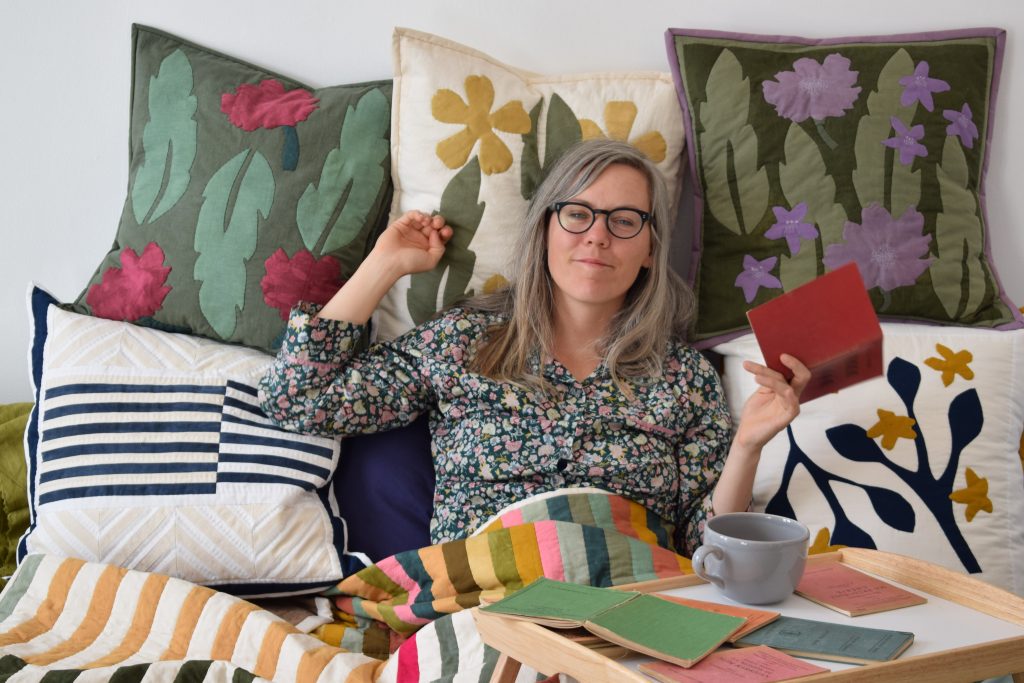 How would you describe your quilting style/aesthetic?
How would you describe your quilting style/aesthetic?
Shelagh: I struggle to answer this question because I feel like I can be all over the place with my ‘style’. I try to let my creative mind wander when I am designing a quilt and not get too concerned about it being in a certain style. That being said, two words come to mind when I try and sum up my quilting aesthetic: colourful and imperfect. I say colourful first because for me, that is what it is all about! I hand dye all of the fabric I use for each quilt, and the color choices are always what drives my design process (instead of the other way around). I say imperfect because I don’t place a lot of emphasis on technical sewing skill or precision in my quilt making, Which is funny because quilting is a very precision-oriented art. In my favorite art, I can always see the hand of the maker, so it doesn’t bother me when there is a wonky seam or a wayward stitch in one of my quilts.
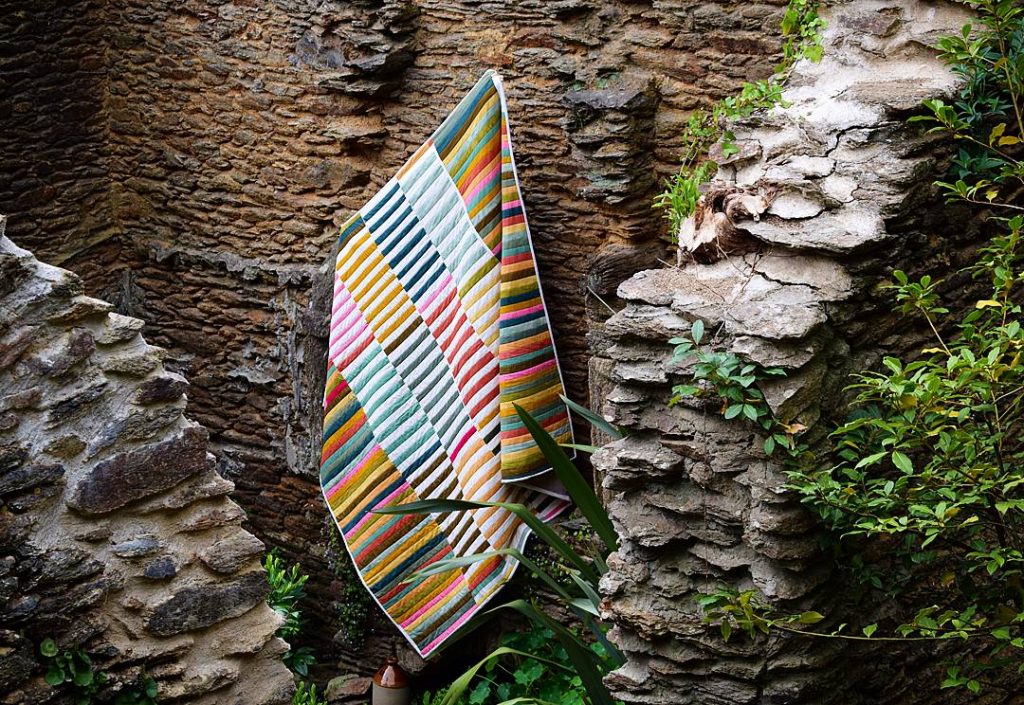
Bookends Quilt. Image courtesy of Shelagh Jessop.
How would you describe the creative environment in your home as a child?
Shelagh: It’s interesting, I grew up in a very sporty family and there was a lot of emphasis placed on fitness and being good at sports, but I just wasn’t interested. It’s what made me different and I loved being ‘the artist in the family’. I was forced to play sports, which was fine because I was naturally good at them, but my passion was in making art and I think this is what drove me to pursue it so rigorously as an adult. The thought of being able to make art all day was a dream and even today, I never think of what I do as ‘work’ (except when I am balancing the SMT check book or paying taxes, that feels like work for sure!).
What artists and makers do you most admire or have an influence on your work?
Shelagh: The biggest influences on my work, especially in the beginning, were the Gee’s Bend quilters. As I mentioned before, quilting is all about the color for me, and finding an outlet to use my hand-dyed fabric was my primary goal in the beginning. When I was studying textile design at the University of Kansas, we learned a lot about dyeing techniques and created beautiful fabrics with vat dyeing, surface design, screen printing, etc. I found myself with all of this gorgeous fabric but didn’t know what to do with it. When I discovered the works of the Gee’s Bend quilters, I had the sense that they were painting with fabric and that they had liberated themselves from what I had always considered a rules-based medium (quilting)…I wanted to do that! I discovered that I could use my hand-dyed fabric like paint and create a quilt like a painter constructs a painting. Today, I find inspiration everywhere I look: the natural world, the antiquities wing at a museum, sewer grates in Japan, tile work at the Alhambra … inspiration is all around!
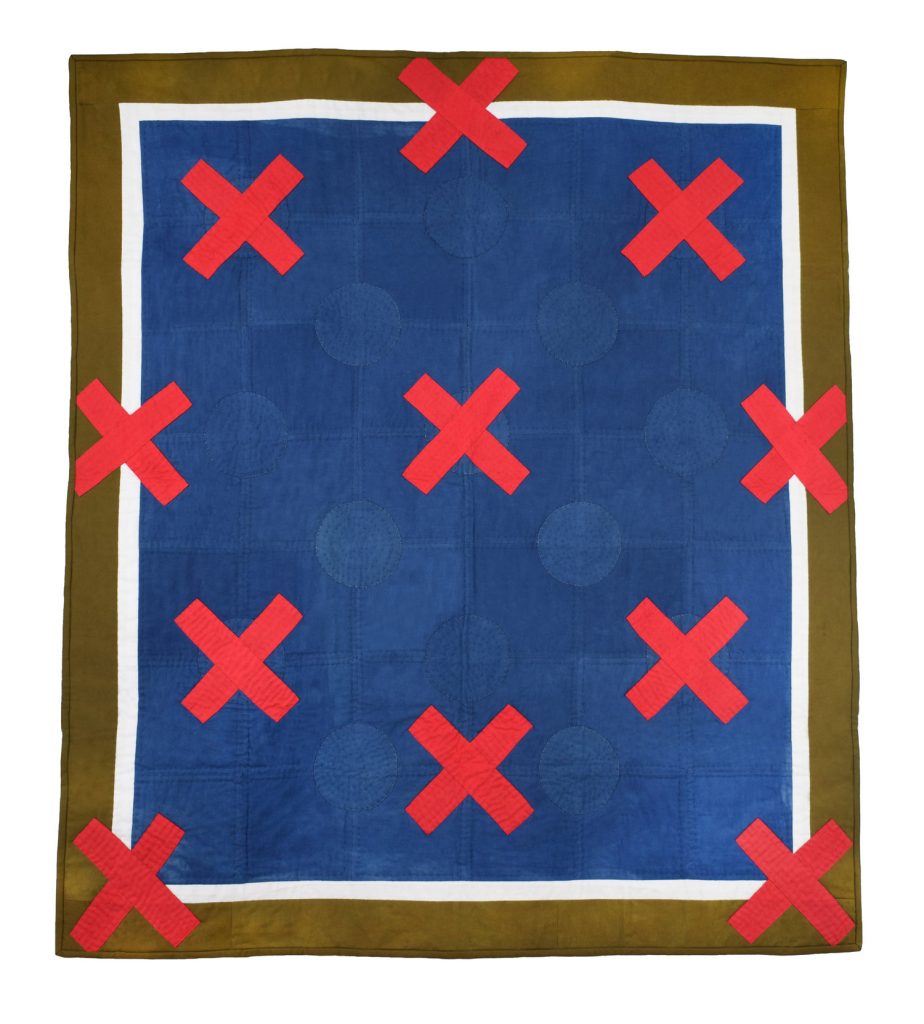
Portrait of the Artist. Image courtesy of Shelagh Jessop.
Do you consider yourself a “quilter”, an artist, or some combination of both?
Shelagh: I love this question because I have thought a lot about it recently. I live in a country where I can’t easily express myself (I am an American living in France) and when people ask me what I do I always say I am an artist because it is an easy, quick response. I usually get a question in return, ‘Oh, you are a painter?’ and depending on how I am feeling I either say, ‘Kind of like a painter but with textiles,’ or if I am feeling really confident with my French skills, I will go into more detail about what I do. In general though I get a very puzzled expression in response to this answer—‘You are an artist but you use textiles?’ I always say yes and just let that hang in the air without explanation because it’s true! I make colors by mixing pigments (like a painter) and with those colors I create a composition (like an illustrator or any other artist). I am definitely an artist, I’d say.
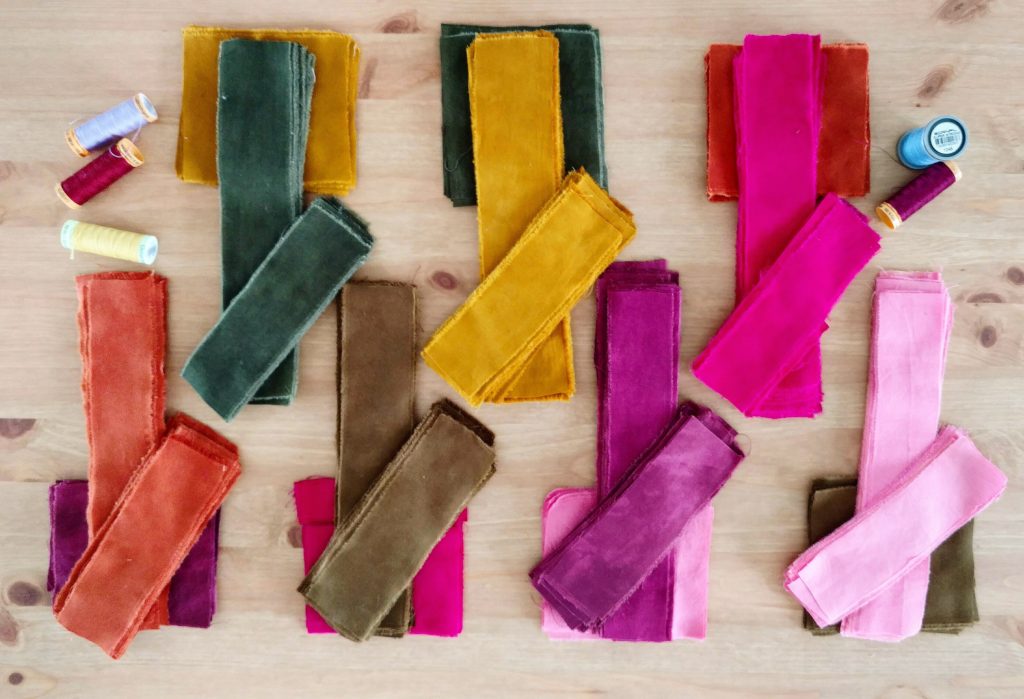
Hand-dyed fabrics. Image courtesy of Shelagh Jessop.
How would you define “making with intention”?
Shelagh: I think I am a maker without any intention (if I understand the question correctly). I make quilts and other art out of textiles but outside of that framework, I give myself no other guidelines. I start the making process with my materials and let myself go anywhere the process takes me. I would turn the phrase around and say my intention is to make, more than making with intention. One of these days my process is going to take me outside of the realm of quilting and even possibly out of the realm of textile art and that is A-OK with me.
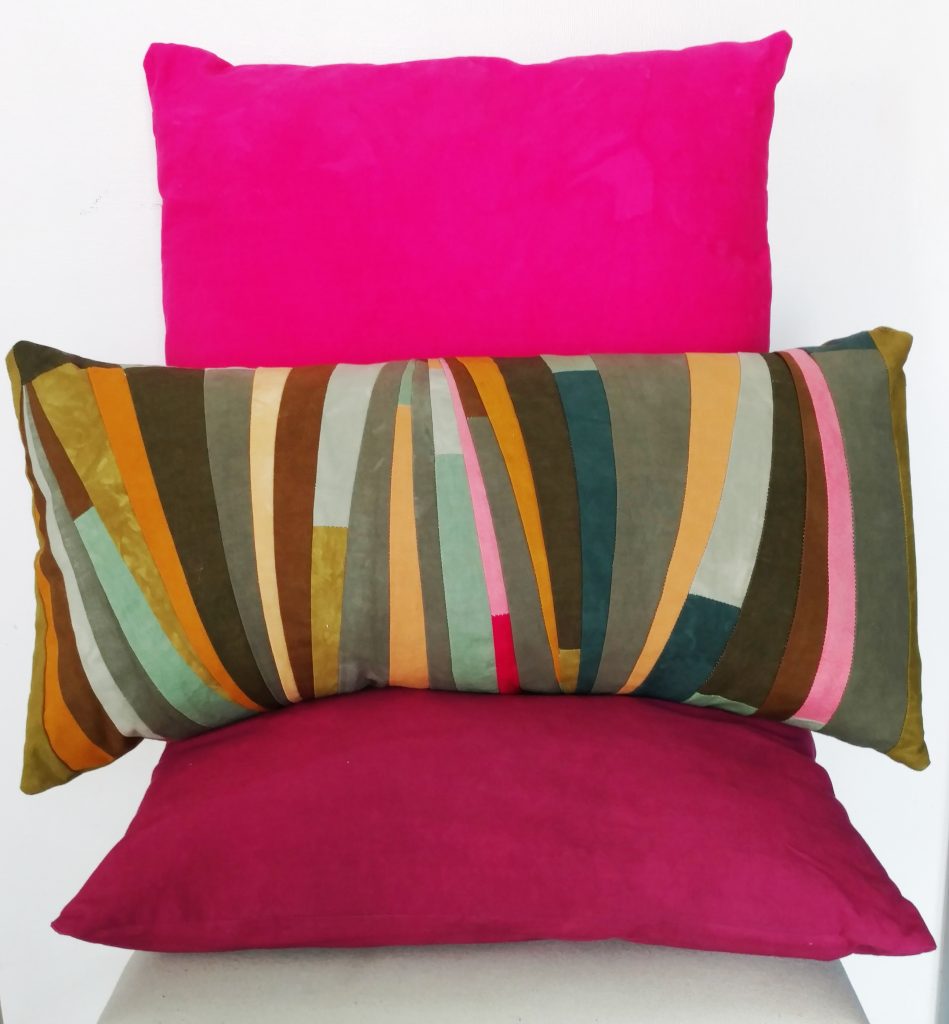
Pillows made with hand-dyed fabrics sold in Shelagh’s homewares shop. Image courtesy of Shelagh Jessop.
Do you think that having a craft makes us more compassionate? If so, then how?
Shelagh: I think taking the time to learn a new skill and creating something yourself connects you to the history of that craft, and also reminds us of the true value of the handmade. Too often we associate something’s value with how cheap we can find it online, without thinking about how long it took someone to make it—someone who obviously wasn’t being paid very much. So in that sense I think crafting has made me a more compassionate consumer.
How does creating feed your soul/spiritual purpose?
Shelagh: There are lots of things associated with being an artist that definitely don’t feed my soul or fulfil any kind of spiritual purpose. At the top of that list I would put figuring out SMT finances, updating my website (I am not a computer person), and small business paperwork in general (especially when it is in another language!). These are the things that are all part of being an artist and a small business owner that are less than glamorous, but a big part of the job. I mention these because they make me appreciate the time that I do get to create so much more. When I am able to really get into the zone of creating and forget about all of that, it is so fulfilling, and that is what being an artist is all about for me.
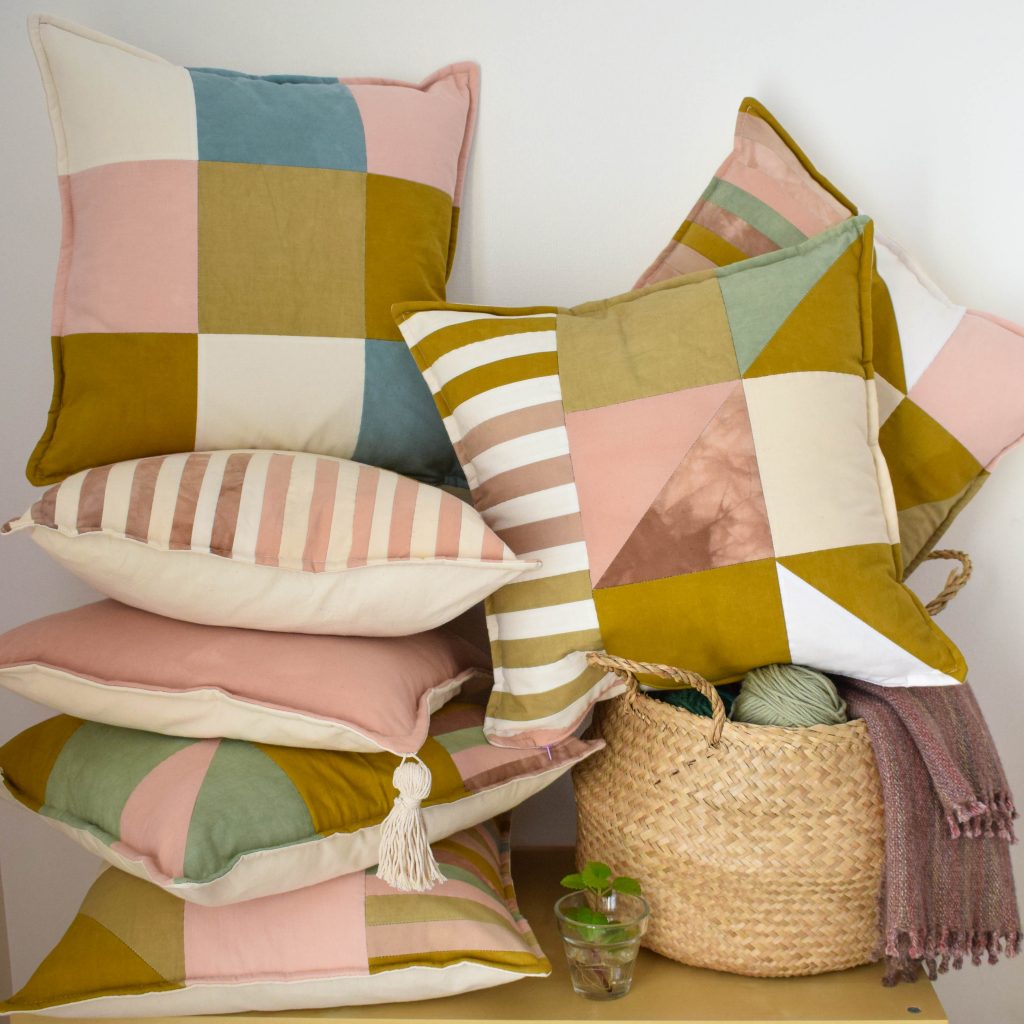
Another lovely batch of hand-dyed pillows sold in Shelagh’s shop. Image courtesy of Shelagh Jessop.
Are there any rituals that you perform to prepare/ground yourself in your work?
Shelagh: My creative process always starts with dyeing a fresh batch of fabric. Nothing is planned and I have only vague ideas until I see all of my new colors together. Then I turn the music up and the internet off and just spend some time in the studio making shapes and moving around pieces until I land on an idea that I want to take further. This step can last a day or a month but it is always where I start. This is a very important ritual for me and the process I have found that helps me to create my best work.
What is the support system you have in place for creating your work?
Shelagh: I am really lucky to have the world’s best partner. He has always been very supportive of my work and has always encouraged me to pursue my art professionally. He is also the person who I can bounce all of my ideas off of because I trust his opinion so much. We have a very similar aesthetic and he doesn’t mind being called into the studio ten thousand times to answer questions and share his ideas. Now that we have a new baby, our whole world has been turned upside down and again he has been a great support. Since he has to work on the weekdays and I take care of our son, he makes sure to take over when he gets home at night and on the weekends so I can still get some time to do my work. I don’t know what I would do without him, he is the best!
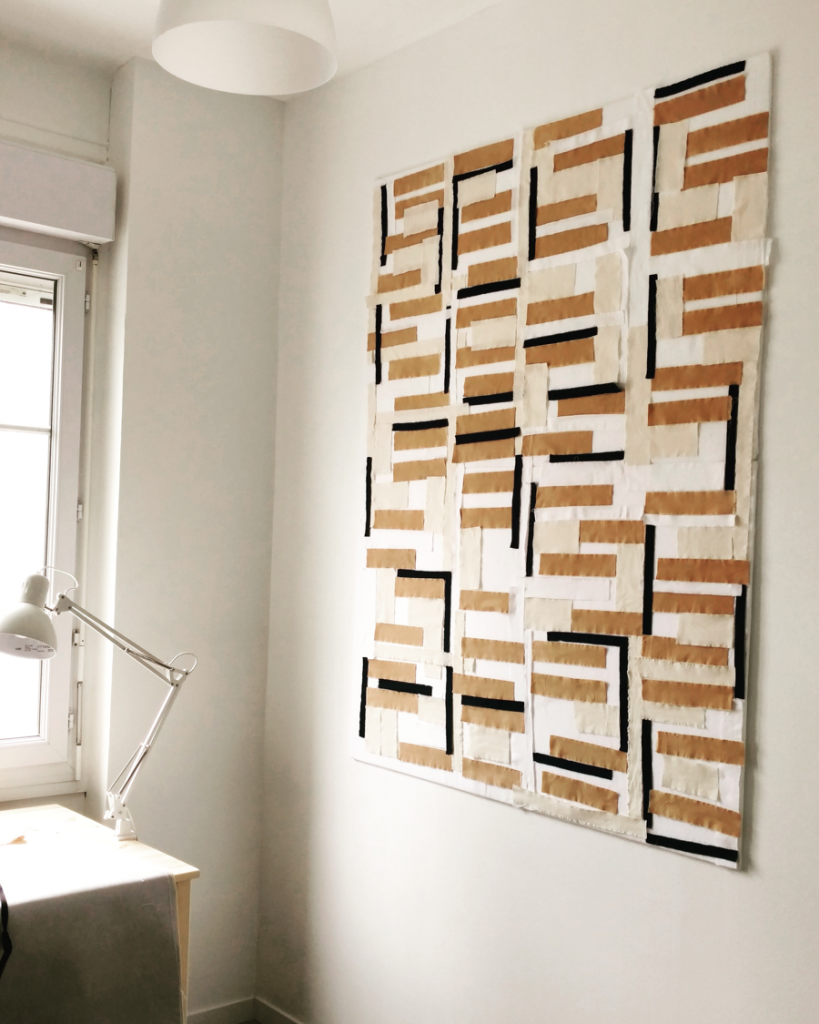
A quilt used to demonstrate the principles of No Rulers, No Rules, Shelagh’s webinar for the Modern Quilt Guild. Also featured in Curated Quilts, vol. 1. Image courtesy of Shelagh Jessop.
How do you deal with comparison to / envy of others? Can you describe a time when you used comparison/envy/admiration to push yourself in your own work and self-discovery?
Shelagh: I am pretty good about not comparing myself to others and in general feel like there is a lot of room for all kinds of success in our industry. I don’t feel threatened by other artists’ success. I don’t think I am particularly noble or wise in this regard, I just think I have low expectations and am always surprised and grateful every time someone likes something I have made. If I work on something very hard and it falls flat or doesn’t get a very good response, I try to use that as the impetus to work twice as hard on the next idea or project. My grandpa was a very successful businessman and he always told us that his superpowers were working hard and never getting discouraged. He said he started at the bottom, working with much more talented people, but none of them worked as hard as he did, and he never let a discouraging word set him back. I try to keep this in mind in my own work.
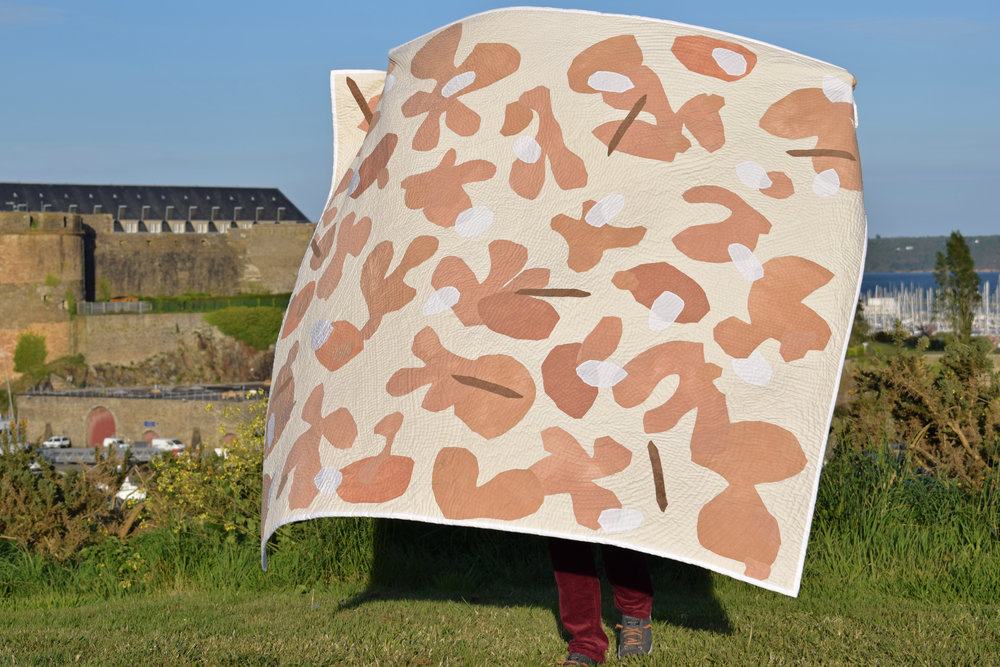
Thallus Quilt. Image courtesy of Shelagh Jessop.
What was the most challenging thing you ever made?
Shelagh: My Thallus quilt for sure! I was discovering appliqué because we were traveling at the time and I didn’t have a sewing machine with me. I don’t know how many hours I spent on that quilt but it was a lot more than necessary because I made so many mistakes and I was constantly unstitching my work and starting over. It was a great experience though and I am so glad I took the time to make it right because I am so in love with appliqué still and am glad I worked through the learning curve.
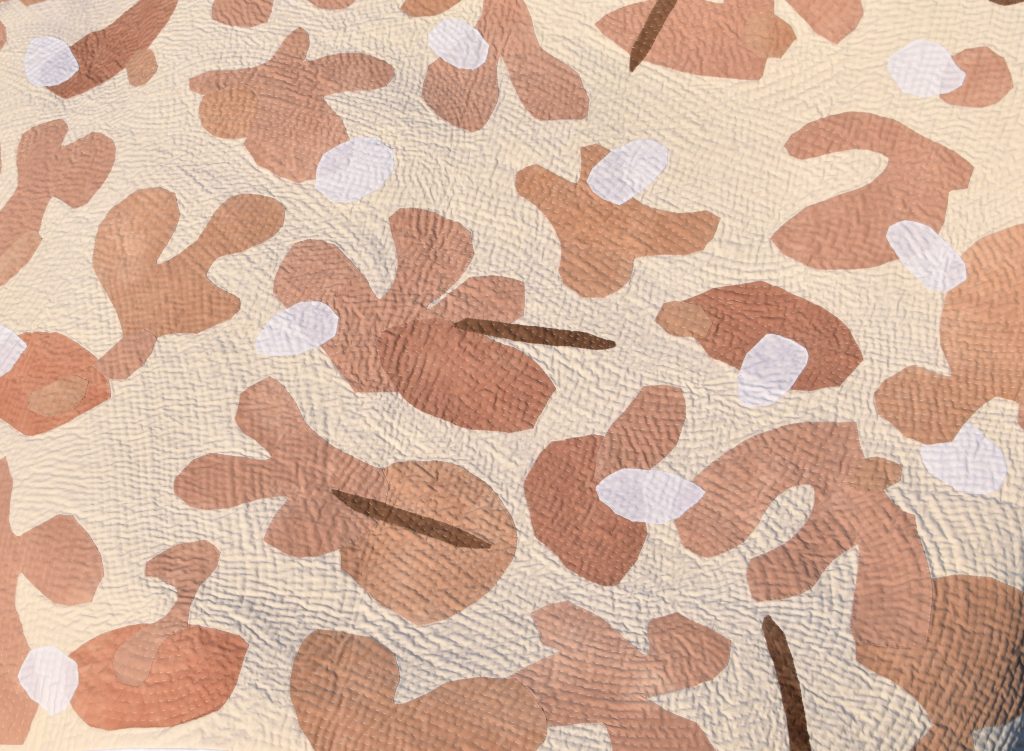
Thallus Quilt (detail). Image courtesy of Shelagh Jessop.
What does it mean to you to work in a traditionally domestic medium that historically has been regarded as predominately female (aka “women’s work”)?
Shelagh: I think this goes back to the question of whether I am an artist or not. I think a big mental hurdle most people have to get over when I say ‘I am an artist who works in textiles’ is that the domestic arts have not been historically considered real art. I like to challenge that idea by saying I am an artist and I make textile art and quilts. Even if I get funny looks I just hold my ground—I’m an artist, enough said!
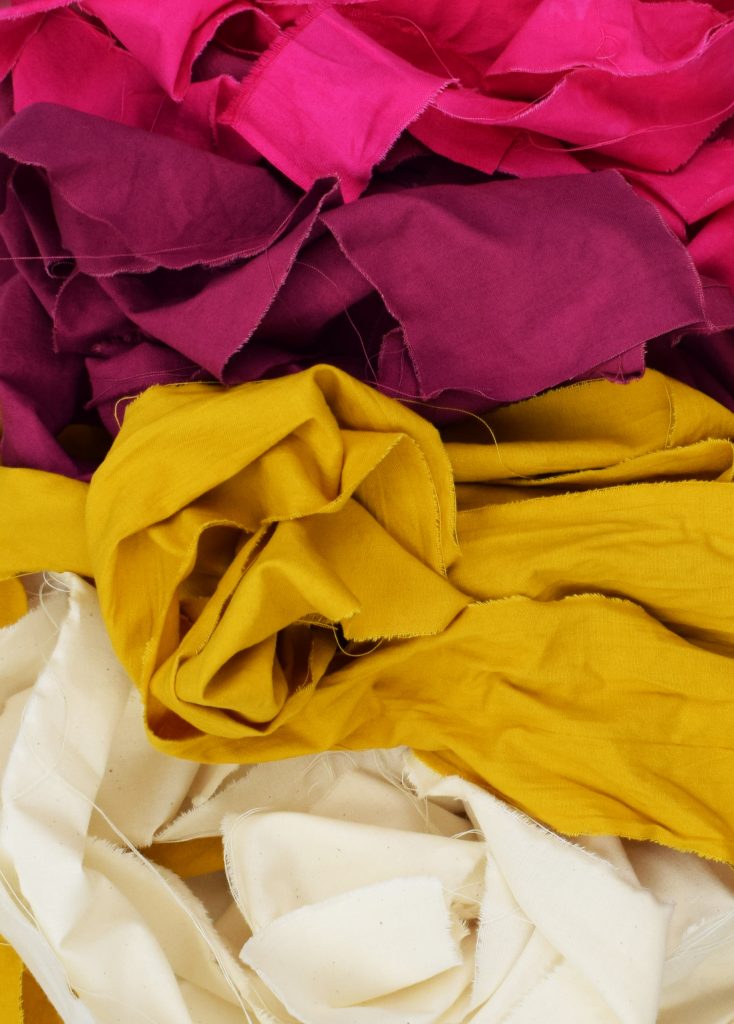
Rich shades of magenta and gold are obtained through Shelagh’s dying process. Image courtesy of Shelagh Jessop.
How do you see your current work in the context of quilting history?
Shelagh: I think the modern quilting movement is an exciting part of what will eventually be quilting history. It is a great time to be a quilter and an exciting time to be a crafter in general because I feel like the whole world is waking up to the pleasure of making things with your hands and building communities around their interests.
Thank you, Shelagh! Your hand-dyed textiles are lovely and it was so fun to have a peek into your process! To learn more about Shelagh and purchase her handmade wears and DIY tools, visit her at Stuart Moores Textiles. Also, be sure to check out Shelagh’s free patterns and tutorials in her Creative Resources Library! You can also find Shelagh on Instagram and Pinterest.
Would you like to be featured in The Creativity Project? I’d love to hear from you. Want to participate, but not necessarily be featured? You can do that! Click here to take the survey!
The Creativity Project can be found on Instagram, Pinterest, Twitter or Bloglovin’. Or sign up for my newsletter The Monthly Muse to have the Creativity Project delivered right to your inbox.
SaveSave
2 Comments
Comments are closed.

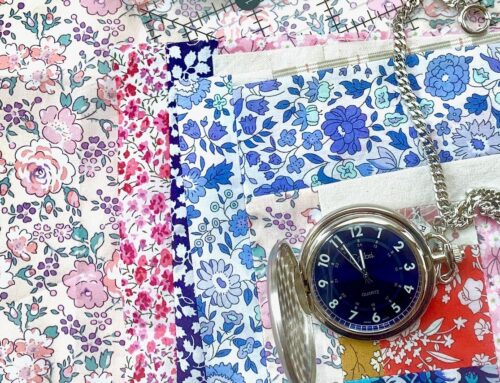
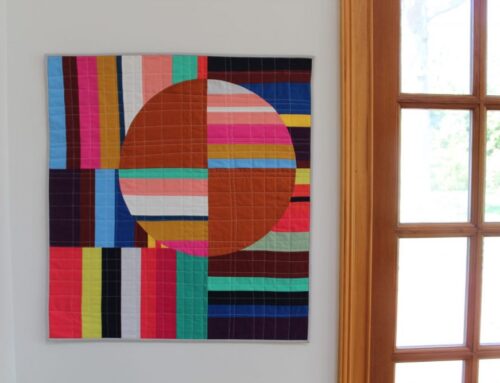
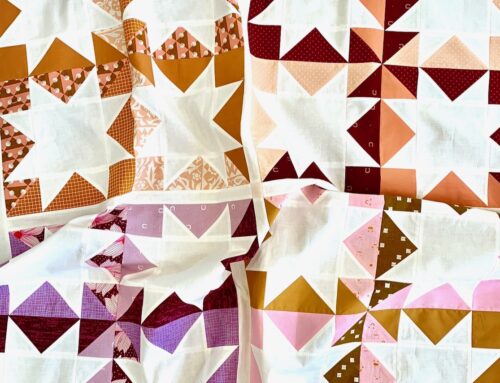

“It is a great time to be a quilter and an exciting time to be a crafter in general because I feel like the whole world is waking up to the pleasure of making things with your hands and building communities around their interests.” Well said!
Absolutely! It’s a fantastic time to be a maker and we have an amazing and supportive community!